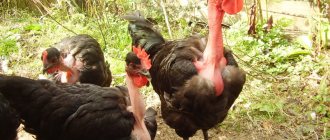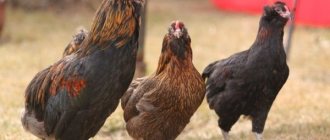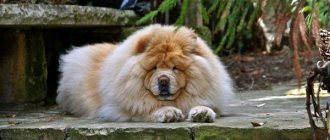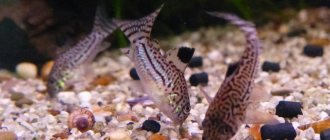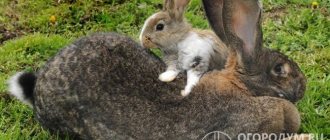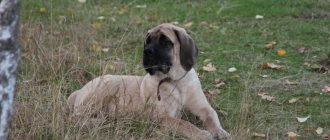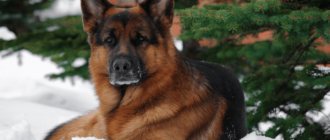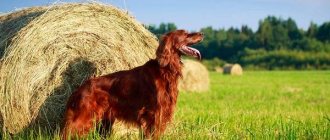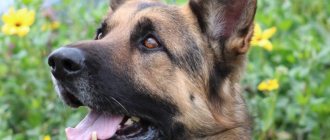Among the varieties of domestic waterfowl, the Muscovy duck is especially popular among private poultry farmers. Despite the relatively low productivity, the breed is in demand due to its complete self-sufficiency. Indo-ducks themselves incubate and raise their offspring, and are well fed on natural pastures. These quiet birds do not cause any trouble for the poultry farmer, providing him with lean, healthy meat.
Origin story
Muscovy ducks live naturally in the forests of South America and Mexico. Their lifestyle is significantly different from ordinary duck species. Musks are sedentary birds that settle along river banks, preferring to hide in dense vegetation.
Indian ducks spend more time on land than in water. They fly well and can climb trees thanks to the sharp curved claws on their paws. The bird also makes nests in trees, choosing spacious hollows in old trunks.
Muscovy ducks feed mainly on grass and seeds. Animal food (tadpoles, crustaceans, fry, insects) is present in the diet insignificantly.
The bird got its name “musk” because of the characteristic leathery growth on its beak. It is believed to secrete oil that smells musky. In males the growth is larger, in females it is almost invisible. The first white travelers who met the bird called it a wood duck because it raised its chicks in nests in trees.
The origin of the second name - “Indoutka”, or “Indian duck” - is associated with the fact that Europeans first met these birds when they saw them among the local Indians, who domesticated ducks long before the arrival of the conquerors.
Some people mistakenly believe that the turkey duck is the product of crossing a turkey and a common duck, which is why the bird has a leathery growth characteristic of turkeys on its head. But this is nothing more than a delusion.
Another popular name for these ducks is mute ducks, given to the bird for its characteristic hissing. These birds do not know how to quack.
Musks were brought to Europe in the 16th century, then the breed spread further. In our country it gained popularity at the end of the 20th century. Since then, the number of Indian ducks in Russia has only increased due to the breeding of birds of different varieties and colors.
Nutrition
It feeds on plant and animal foods. It is best to make food in the form of a wet mixture. You finely chop grass, fresh tops, greens, household waste, mix it all, add grain - and the mash is ready. They love to eat corn.
Before feeding barley to indo-ducks, it must first be soaked and then served with plenty of drink. They themselves can catch insects and worms from the existing reservoir. That is why it is advisable to have a small pond nearby. Or dig it yourself.
When feeding, follow some rules:
- Do not feed them too hot food; even in cold weather, you need to cool the food to room temperature.
- Do not give a lot of food at once, especially if you keep them with other ducks. Don't allow fights between them. Maintain a balance in your diet, include mineral feed, and monitor the availability of water.
- Add vitamins to your diet. They need vitamins A, C, B, D, E, K, and H.
Description and characteristics of the breed
The main feature in the description of the Indian duck breed is the size of the bird. This is one of the largest species of wild ducks. The live weight of drakes in the wild reaches 3.5 kg, ducks - 1.5 kg. Poultry grows to 6–7 kg and 2–2.7 kg, respectively.
Indo-duck breeds differ in the color of their plumage. White, blue, chocolate, and black birds were bred. The natural color of musks is black and white and black. During the mating season, the color of the drakes remains unchanged.
Appearance
The bird has a horizontal body on strong legs. The length of the body in males reaches 85–90 cm, in females - 60 cm. The wings are large and well developed. The paws are webbed and equipped with sharp claws.
The duck's head is small; the male has a bright red wrinkled growth on his forehead. The female has a small leathery thickening visible only above the beak.
Sexual dimorphism in mute mules is pronounced - females are twice as small as males and differ from them in appearance. Starting from 3–4 months of age, you can understand where the drake is and where the duck is.
Lifestyle and behavior
Wild musk ducks are characterized by secretive behavior, spending most of their time in dense coastal vegetation. They graze or rest in the forest thicket.
These ducks don't quack. When in danger, they hiss like snakes. When calm, they make quiet sounds similar to the cooing of pigeons.
Under natural conditions, the Indian duck practically does not swim in water, preferring to look for food and swim in shallow water near the shore.
Range and habitats
The musky duck still lives along the banks of rivers and forest lakes in Mexico and other countries of South America. The population of the species is not as large as before due to deforestation.
Mute mutes choose areas with dense, impenetrable vegetation for nesting. The bird goes down to the water only to drink, feed and swim.
How long do Indian ducks live?
In nature, due to predators and hunters, ducks live only a few years. In captivity, in zoos, the lifespan of individual individuals is 20 years.
Ducks are kept in households for 4–5 years; after this age, ducks stop laying eggs. Their further maintenance becomes economically unprofitable.
Premises requirements
Birds are unpretentious to living conditions, especially hybrids. In the summer, a canopy that protects them from the sun and rain is enough for them. In winter, it is better for birds to live in a separate room, without chickens and other living creatures. For three birds you need to allocate a minimum of one square meter.
Suitable Perch
Logs up to 5-7 cm thick are suitable as a perch - thanks to the sharp claws, the Indian duck easily rests on them.
Poultry house design
In the first days of life, chicks need to be provided with round-the-clock lighting, but for adult birds it will only be harmful. The drakes are becoming more aggressive, and the ducks are not far behind. Beginner farmers who know only from books what an Indian duck is may be surprised by the cruelty of the birds pecking at each other. Therefore, dim lighting around the clock will be quite enough, especially when it comes to meat breeds.
Wild Indian ducks
The main color of wild representatives of the breed is black or black and white. But there are also individuals of other colors, which were later used to breed different breeds.
Brown red
These birds have a uniform feather color - from rich chocolate to reddish brown. The feathers on the head are a darker shade, so the bird appears to have a cap.
The beak is red and the eyes are orange.
Even in the wild, red musks have an impressive weight - up to 3.5 kg for drakes. Domesticated individuals weigh up to 7 kg.
Blue
A beautiful bird with blue-gray plumage. Often the feathers on the chest have a dark border. White feathers may be present on the wings. The color of the head is dark gray.
In terms of weight, blue musk ducks are slightly inferior to red ones. Drakes weigh about 3 kg, poultry - 5–5.7 kg.
What to feed little baby ducklings in the first days of life?
Feeding ducklings is quite different from feeding adult ducks. The process requires care, because small chicks do not know how to eat and drink. They need to be taught to do this. The forms and principles of feeding Indo-ducklings are divided into 3 groups:
- 1 day from birth;
- 20 days;
- 1 month.
What to feed baby ducklings
Feeding ducklings from 1 day
Chicks hatched from eggs (usually after 32-35 days) can be immediately taken from their mother. Half an hour is enough for them to get used to their new life. You should take them indoors - it’s too cold for them in the poultry house. Let's look at feeding ducklings in “chronological order.”
Day-old chicks need to be taught to eat and drink. They react to movement and peck moving food. Many farmers boil hard-boiled eggs, chop them finely, and sprinkle them on the backs of the chicks. The chicks move, the grains fall down, and the chicks peck in response to the movement
Drinking is easier: you just need to move the container and beat the liquid with a stick so that the chicks pay attention.
Infrared lamp
Starting from day 2, ducklings can already consume a semi-liquid mixture of finely chopped eggs and milk. You can add a small amount of bran
If the chick has not learned to eat on its own, repeat the trick with a chopped egg. On day 2, the ducklings still need to be force-fed. On day 3, the baby ducklings will be able to feed themselves. They are given cottage cheese, fine crumble of onion and spinach, chopped beet tops, crushed grains. The main thing is to make sure that the food is cut small enough.
From 4-5 days, ducklings are fed finely chopped meat scraps, adding them to their previous food.
Feeding ducklings from 20 days
From 20 days, baby ducklings begin to react normally to boiled potatoes. But you shouldn’t feed potatoes alone – you just need to add them to your food to increase the volume. Potatoes should make up 20% of the total diet. In principle, you can feed ducklings potatoes from 10 days, but it is better to wait until 20.
Otherwise, feeding ducklings until day 30 should remain approximately the same. The diet is the same as in the first days
Mineral and vitamin supplements are highly important
Young Indian ducks
Feeding ducklings from 30 days
At 2 months of life, ducklings are fed a variety of foods. A sample diet includes:
- compound feed (crushed grains, cake, bran, meal);
- boiled potatoes;
- cooked meat waste;
- chopped beet tops, nettles, garden grass (chopped greens);
- mineral supplements, premixes;
- chalk;
- salt.
Muscovy ducks 5-6 months
A duckling needs up to 150 g of feed per day, 60 g of potatoes, 20 g of boiled meat waste. Chalk and mineral supplements should be used in the amount of 2-3 tablespoons per 10 ducklings. No more than 1 tablespoon of salt is needed per 10 ducklings. About the same amount is finely crushed gravel. In the case of a separate diet, you need to add chalk, salt and food additives to each type of food.
Indian woman with ducklings
Homemade
Domesticated species of Indian ducks retained the body proportions of their wild relatives, but doubled their weight. Egg production has also increased - instead of laying 10-16 eggs, the duck lays about a hundred eggs a year.
White
White Indian ducks (not albino) are not found in nature, since this color is deadly for the bird. The white duck is clearly visible even in dense vegetation.
White muskies have blue eyes and should not have black feathers on their plumage. The carcass of white ducks has a good presentation - it is clean, with a yellowish tint to the skin.
The weight of the birds is 6 kg (for males) and 3 kg (for females), egg production is 100 eggs per year.
Black and white
The most familiar and frequently encountered bird in the homestead. The back, sides and wings of ducks are painted black, the head, neck and chest are white. As a duck ages, there are more white areas on its body. The beak is red, the eyes are brown.
The live weight of drakes is 5–5.5 kg, females - 2.2 kg. Annual egg production is 100 eggs.
Brown-white
A bird with elegant bright plumage. The pattern is similar to the color of the black and white duck, but the black color is replaced by coffee or chocolate. The beak is reddish-pink, the eyes are light brown.
The productivity indicators of red and white musk ducks do not differ from black and white ducks.
Black
A small but beautiful variety of mute. The plumage of the birds is jet black; against this background, the red corals on the head stand out especially brightly. The flight feathers glow emerald green in the sun. Some individuals have visible small white spots on the chest and neck.
The weight of drakes reaches 5 kg, ducks - 2 kg. Egg production - 80 eggs per year.
Blue
Blue ducks have ash-gray plumage on their backs, sides and wings. The birds' head and neck are white. The beak is yellow, the eyes are amber or light blue.
The live weight of an adult male is up to 5 kg, and that of a duck is 2.5 kg. Females lay up to 90 eggs per year.
White with a pattern
The main color of indo-ducks is snow-white, with small black spots scattered throughout. They form chains or islands, sometimes the duck is evenly spotted.
Drakes weigh 6 kg (at the age of 4 months - at least 3.5 kg), ducks - about 3 kg. Egg production - 110 eggs.
Most popular diseases
Indian ducks have strong immunity, so they rarely get sick. However, they may still encounter some diseases:
- Down eater. It is a small insect that feeds on particles of skin and feathers of birds. It does not pose a serious danger, but it worsens the health of the Muscovy duck. The presence of a parasite can be determined by its behavior - the duck becomes restless and often bites its feathers.
- Inflammation of the mucous membrane of the goiter. Occurs when fed with low-quality food, as well as when there is a lack of vitamin A in food. When the disease occurs, the goiter increases in size, and the bird stops drinking water and eating food. Sometimes a little green liquid may come out of your mouth.
- Pecking eggs. The syndrome often occurs when there is a lack of sulfur or calcium in the diet. By pecking, the bird tries to restore the balance of minerals. The syndrome is not too dangerous, but can cause the bird to destroy all its eggs.
Elimination of poultry diseases
You can treat diseases yourself or after consulting a veterinarian.
Treatment options:
- To treat a down-eater you will need sulfur, ash and sand. These components must be mixed in equal proportions. And place the basin with the resulting mixture in the poultry house. Birds will take sand and ash baths on their own. This way the mites won't spread too much throughout the musky's body.
- In case of inflammation of the mucous membrane of the goiter, it is recommended to completely change the food. It is also recommended to include carrots, boiled eggs or any other foods high in vitamin A in your diet.
- When pecking eggs, you need to buy mineral bait based on sulfur and calcium. Complementary foods should be given according to instructions in short courses.
Vaccination
Caring for turkey ducks does not include vaccination, since birds rarely suffer from bacterial or viral infections. The exception is bird flu - if an outbreak of this disease occurs, vaccination should be mandatory. After all, the disease can thin out more than 50% of the brood up to the complete destruction of the herd.
Vaccination methods depend on the type of vaccine - usually two shots are given, and the vaccine provides immunity for 6-12 months. Vaccination can only be carried out by a veterinarian.
Disease Prevention
To prevent birds from getting sick, you need to feed them high-quality food with a high content of minerals and trace elements. It is recommended to periodically update the substrate in the poultry house and outside to prevent mold from growing there.
The water should be changed at least once a day, since pathogenic microorganisms often settle in old water.
Living conditions and care
The Muscovy duck is a heat-loving bird that cannot tolerate frost. For the livestock, an insulated barn is built with the possibility of additional heating (IR lamps, stoves) in case of winter frosts. The temperature in the barn should not be allowed to drop below 0 degrees, and the temperature comfortable for the livestock is +15...+20 degrees.
To bathe, mute birds do not need to install baths or dig a pond; it is enough to place a basin or bucket of water so that the bird can rinse its beak. In winter, in order to avoid dampness in the barn, a bucket of water is placed on a wide basin covered with a net. All the water splashed out of the bucket by the ducks will end up in the basin, and the net will prevent the birds from dragging it around the barn.
In the duck house, in addition to feeders and drinkers, nests in the form of houses are installed. Their number should correspond to the number of females on the farm. Muscovy ducks cannot stand competitors sitting nearby on eggs and start fights.
Grain, vegetables and hay are prepared for the winter as food for the mute ducks. In summer, ducks are released to graze, where they readily eat succulent vegetation.
Families are formed from 1 drake and 3–5 females. Ducks incubate eggs for 33–35 days, the percentage of chicks hatching under the hen is very high. If you take the babies and raise them yourself, the duck will rest a little and then hatch again and hatch more ducklings before the cold weather sets in.
Carrying out forced molting
At the beginning of summer and at the end of September, turkey ducks begin their molting period. At this time, egg production decreases.
To shorten this period, poultry farmers carry out so-called forced molting using hormonal drugs or changing diet.
To use hormonal medications, be sure to consult a veterinarian.
We recommend using the method of changing your diet. This is the safest and most humane way.
The following is a “recipe” for accelerated molting of individuals:
| Deadlines | Actions |
| 1 day | Remove food, leave water and light |
| Day 2 | Remove food, water and light |
| Day 3 | Give 50 g of grain and water, turn on the light in the poultry house from 8 to 11 o'clock |
| 4 day | Do not provide feed or water, but turn on the lights in the house between 8 and 11 a.m. |
| From 5 to 19 days | Grain – 100 g, water – constantly, light – from 8 to 12 o’clock |
| From 20 to 30 days | Compound feed - 100 g, water - constantly, light - from 8 a.m. to 2 p.m. |
| From 31 to 40 days | Compound feed - 130 g + 20 g grass meal, water - constantly, light - from 8 a.m. to 4 p.m. |
| From 41 days | Feed, water and light - according to the usual schedule |
Note! Before carrying out forced molting using any of the previously described methods, you should consult a veterinarian.
Advantages and disadvantages of Indian duck
The main advantages of muzzles are:
- calm disposition and unpretentiousness;
- preserved maternal instinct;
- delicious lean meat;
- herbivory.
Among the disadvantages, experts include a pronounced difference in live weight between males and females and slow growth compared to Peking ducks.
Assessing the pros and cons of keeping a musky duck, we can conclude that this bird is suitable for small farms and private households. Musks are invisible and cause minimal disturbance. The ducks will hatch properly and raise their ducklings; the owner just needs to make sure that the bird has safe grazing. In the fall, the poultry farmer will receive several dozen heads of young animals with the most tender, tasty meat.
Business
The business of breeding Indian ducks is very attractive because the initial costs quickly pay off.
To create a farm, an entrepreneur needs:
- buy land;
- equip a poultry house and walking area;
- purchase a batch of ducklings;
- buy feed and bedding;
- equip the farm with an incubator and a machine for plucking carcasses.
If an entrepreneur refuses to regularly purchase day-old ducklings and hatches them using an incubator, the costs of building a farm will pay off within 2 years.
https://greenologia.ru/eko-zhizn/xozyajstvo/fermerstvo/pticevodstvo/utki/indoutki/razvedenie-2.html
Profitability of breeding musk ducks
The most profitable breeds of Indian ducks for home breeding are considered to be white and red-white varieties. They are large and produce a beautiful carcass with white skin. In individuals with colored feathers, dark spots are often visible on the skin - future feathers are sprouting, which spoils the presentation.
Since the price for young animals is high and amounts to approximately 200 rubles per day-old duckling, it is more profitable to keep a family of turkey ducks on your farm.
Compared to Pekin and other types of ducks, muskies eat very little, preferring vegetation and vegetables rather than grains. Feeding them in the off-season will not cost much.
In a year, each musk duck will lay from 80 to 110 eggs, some of which can be placed in an incubator, and some can be entrusted to the duck to hatch. The hatching rate of ducklings in the incubator is 60–70%, and under the duckling – up to 100%. From 9 to 13 eggs are placed under the hen. After incubation, the Indian duck will become an excellent caring mother. You can add hatchery young to her own children; the female will warm and raise up to 30 ducklings at a time.
Young animals are raised on pasture or in a paddock, receiving fresh grass every day. During the rearing period from birth to slaughter at the age of 4 months, each individual will eat 6–8 kg of grain mixture at a price of 12–15 rubles per 1 kg. Most of the musk's diet consists of grass, vegetables and food scraps, which are practically worthless.
Indo-ducks are in good health and do not require antibiotics.
Thus, in the fall you can get one and a half hundred heads of young animals from one family of turkey ducks. The total weight of the carcasses can be 200–250 kg. Ducks are kept on the farm for up to 3 years.
Increased egg production
To get more eggs, for example, in the spring, to increase the number of ducks, you can use the following tips:
- Add calcium supplements to the birds' diet (chalk, shell rock, bone meal).
- Increase the room temperature to +25… +30 degrees.
- Provide high-quality lighting around the clock.
Even in this case, it will not be possible to get a sharp increase, since among modern breeds of indo-ducks there is no egg-laying specialization. At best, you can only count on a few extra eggs.
Interesting Facts
Mute birds not only fly well, but also climb vertical surfaces well with the help of sharp claws. To prevent the grown-up young from traveling, the flight feathers on one wing are trimmed. It is better to make a fence in a duckling's enclosure not from a mesh, but from a picket fence or solid pieces of slate or iron.
If you combine two ducks with broods in one room, the stronger female can take the children from the weaker duck and raise them herself.
Sitting on the nest and raising the young, the duck shows courage and selflessly protects the offspring. There are known cases when musk hens killed large rats with their beaks that wanted to steal eggs.
A day old duckling should see its first food in motion. In nature, ducklings immediately begin to hunt for insects after hatching. At home, food is poured on top of the backs of the chicks. The food rolls off the back onto the floor, the ducklings see the movement and grab the pieces. Having tasted the food, they already begin to eat from the bowls.
Muscovy duck is popular and in demand in small and large farms. Due to the unpretentiousness of Indian ducks in keeping and feeding, breeding this bird is economically profitable. An incubator is not required to produce ducklings, as female musk ducks are excellent brood hens and mothers.
Character of birds
Indian dogs have a calm character and quickly get used to their owners. The bird settles in its territory. Leaves the surrounding area rarely and not for long. When kept free-range, the herd knows its route. There is no need for ducks to graze. The herd will go for a walk on its own and return to the barn.
Drakes show aggression when there are a large number of them in a large herd. Fighting usually occurs when dividing food and for access to the feeder.
Important! Adults are able to drive young animals away from food.
Females are considered excellent brood hens. Eggs of other poultry breeds are often placed under ducks. Females sit in the nest until the offspring appear. Ducks are capable of leaving or interrupting egg laying if they receive severe stress.
Advice! Muscovy ducks love fish, so they are attracted to shiny objects. It is important to remove glass shards and silver metal scraps from the yard. The bird is capable of swallowing shiny debris, which will lead to its death.
